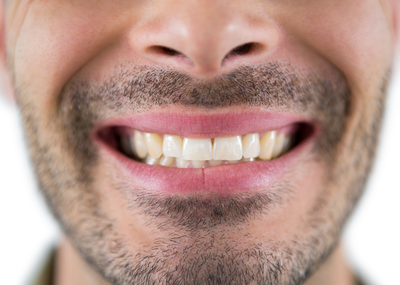Understanding Coffee Teeth Stains
The Causes of Coffee Teeth Stains
For years, I wondered why my teeth were becoming more discolored. I learned that the main culprits behind coffee teeth stains are ingredients called tannins. These tooth staining tannins are naturally occurring compounds found in coffee that adhere to tooth enamel and cause discoloration over time. As a regular coffee drinker, I started to notice that my teeth were becoming increasingly yellow and stained, which made me feel self-conscious about my smile. It's essential for us coffee lovers to understand how coffee stains our teeth to effectively address the issue and restore our confidence.
Not only do the tannins in coffee stain teeth, but the acidity of coffee can also contribute to tooth discoloration. The acidic nature of coffee can weaken the tooth enamel, making it more susceptible to stains. Drinking coffee frequently can also cause surface stains, which can lead to deeper tooth discoloration if not addressed. To maintain a bright smile, it's crucial to be aware of how coffee affects our dental health and take steps to minimize the damage.
Types of Coffee and Their Staining Effects

As a coffee lover, I've tried different types of coffee, from black to iced coffee, and noticed that some seem to stain teeth more than others. This led me to research the staining effects of various coffee types. I discovered that the darkness of the coffee, as well as the brewing method, can influence the staining potential. For example, black tea and black coffee contain higher amounts of tannins, which can lead to more significant staining. On the other hand, iced coffee or lighter roasts may have a reduced staining effect on teeth due to their lower tannin content.
While it may be tempting to switch to a lighter roast or iced coffee to reduce stains on teeth, it's important to remember that all coffee types can still contribute to tooth discoloration. Even decaffeinated coffee can cause stains on your teeth. To minimize the impact of coffee on our smiles, it's essential to implement preventive measures and maintain good oral health habits.
Preventing Coffee Stains on Teeth
Drinking Coffee with Less Contact
One effective way to prevent stains from coffee is to drink it with less contact between the coffee and your teeth. I've found that sipping coffee slowly and swishing it around in my mouth can increase the risk of staining. To avoid this, I try to drink coffee quickly and limit the amount of time it spends in contact with my teeth. This can help reduce the staining effect of coffee and keep my smile looking brighter.
Another option is to drink coffee with milk or cream, which can help dilute the tannins and reduce the staining potential. Drinking coffee with milk can also help neutralize the acidity of coffee, which can be beneficial for protecting tooth enamel. However, it's essential to keep in mind that adding milk or cream to your coffee can also contribute to additional calories and sugar, so be mindful of your overall diet and health goals.
Rinsing Your Mouth After Drinking Coffee
After enjoying my morning cup of coffee, I've made it a habit to rinse my mouth with water. This simple practice can help wash away coffee residue, reducing the risk of staining. Rinsing your mouth with water can also help neutralize the acidity of coffee, which can be beneficial for protecting tooth enamel and maintaining overall oral health. I find that this simple step helps me feel more confident about my smile and reduces the impact of coffee stains on my teeth.
It's also a good idea to wait at least 30 minutes after drinking coffee before brushing your teeth. Brushing too soon after consuming acidic beverages like coffee can cause further damage to your tooth enamel. By waiting for a while and then brushing, you can effectively remove coffee stains and protect your teeth at the same time.
Using a Straw to Minimize Staining

I never thought a simple straw could make a significant difference in my fight against coffee teeth stains. By using a straw to drink my iced coffee or even hot coffee, I can minimize the contact between the coffee and my teeth, reducing the potential for staining. This small change has helped me enjoy my coffee habit without worrying as much about the impact on my smile.
While using a straw is a helpful tip for reducing coffee stains, it's essential to remember that straws can have an environmental impact. I prefer using reusable or biodegradable straws to minimize my environmental footprint while still enjoying my coffee and protecting my teeth from stains.
Choosing the Right Dental Products
Whitening Toothpaste for Daily Use
One way I've been able to address coffee stains on my teeth is by incorporating a whitening toothpaste into my daily oral care routine. These toothpastes often contain mild abrasives like baking soda or hydrogen peroxide, which can help remove surface stains and restore the natural whiteness of my teeth. However, it's essential to choose a toothpaste that's gentle enough for daily use, as some whitening toothpastes can cause tooth sensitivity if used too frequently.
When selecting a whitening toothpaste, I always look for products that have been approved by a dental professional or carry a seal of approval from a reputable dental organization. This ensures that the toothpaste is both safe and effective for removing stains from my teeth without causing any harm to my tooth enamel or gums.
Whitening Mouthwashes and Rinses
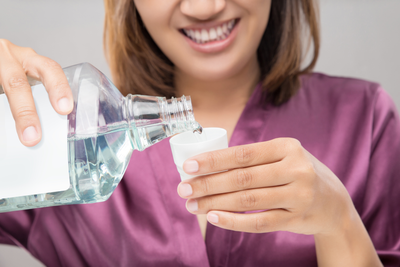
Another product that has helped me in my battle against coffee stains is a whitening mouthwash or rinse. These products typically contain hydrogen peroxide or other whitening agents that can help remove stains from your teeth and improve the overall brightness of your smile. I've found that using a whitening mouthwash in conjunction with a whitening toothpaste can provide an extra boost to my efforts to keep my teeth stain-free.
As with toothpaste, it's crucial to choose a mouthwash that has been approved by a dental professional and is gentle enough for regular use. If you have sensitive teeth or gum disease, consult with your dentist before using a whitening mouthwash to ensure it's appropriate for your needs.
Home Teeth Whitening Kits
For more advanced coffee stains, I've found that home teeth whitening kits can be an effective solution. These kits typically include whitening strips, trays, or gels that contain a higher concentration of whitening agents than what's found in toothpaste or mouthwashes. I've used these kits to help remove stubborn stains and restore the natural whiteness of my teeth.
When choosing a home teeth whitening kit, it's essential to follow the instructions carefully and consult with a dental professional if you're unsure about the best product for your needs. Some whitening kits can cause tooth sensitivity or gum irritation if not used correctly, so it's crucial to follow the guidelines and listen to your dentist's recommendations.
Effective Oral Hygiene Practices
Proper Brushing Techniques
One of the most critical steps in preventing coffee stains on teeth is maintaining proper oral hygiene practices. I've learned that using the correct brushing technique can make a significant difference in keeping my teeth clean and stain-free. By holding my toothbrush at a 45-degree angle to my gums and gently moving it back and forth in short, circular motions, I can effectively remove stains from coffee and other sources. I also make sure to brush for at least two minutes, twice a day, to keep my teeth in optimal condition.
Additionally, I've found that using an electric toothbrush can be more effective at removing coffee stains and maintaining overall oral health. Electric toothbrushes often have built-in timers and pressure sensors that can help ensure you're brushing correctly and for the recommended amount of time. If you're struggling with coffee stains, consider investing in an electric toothbrush to enhance your oral care routine.
Flossing Regularly to Maintain Oral Health
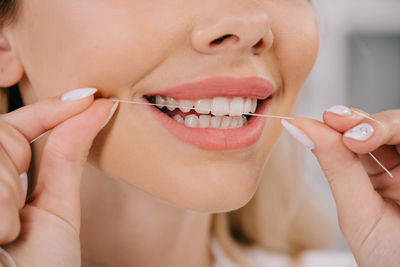
While brushing is essential, I've also learned that flossing plays a crucial role in maintaining oral health and preventing coffee stains. Flossing helps remove plaque and food particles from between teeth and along the gumline, which can contribute to tooth discoloration if not addressed. I make it a point to floss at least once a day to keep my teeth and gums healthy and reduce the risk of staining.
If you find traditional flossing difficult or uncomfortable, consider trying an interdental brush or a water flosser. These alternative flossing methods can be just as effective at removing plaque and preventing stains, and they may be more comfortable for some people to use regularly.
Regular Dental Checkups and Cleanings
Visiting the dentist for regular checkups and cleanings has been instrumental in keeping my teeth stain-free and maintaining my oral health. Dental professionals can thoroughly clean my teeth, remove any built-up plaque or tartar, and address any emerging dental issues. They can also provide personalized recommendations for preventing coffee stains and maintaining a bright, healthy smile.
I make it a priority to visit my dentist at least twice a year for a checkup and professional cleaning. If you're struggling with coffee stains, it's essential to maintain a consistent schedule of dental visits to ensure your teeth remain in optimal condition and to receive the necessary care to address any staining issues.
Professional Teeth Whitening Options
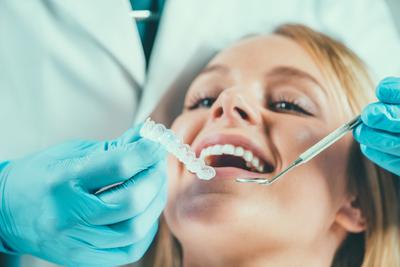
In-Office Teeth Whitening Procedures
For more severe coffee stains that don't respond to at-home treatments, I've considered professional teeth whitening options. In-office teeth whitening procedures typically involve the use of a high-concentration bleaching agent and specialized equipment to achieve dramatic results in a short amount of time. I've found that these treatments can provide a more significant improvement in the brightness of my smile compared to over-the-counter options.
It's essential to consult with a dental professional before undergoing any in-office teeth whitening procedure to ensure it's appropriate for your needs and to discuss potential side effects, such as tooth sensitivity or gum irritation.
Custom Take-Home Whitening Trays
Another professional whitening option I've explored is custom take-home whitening trays. These trays are created by your dentist using impressions of your teeth, ensuring a perfect fit for optimal whitening results. The trays are filled with a professional-grade whitening gel and worn for a specified amount of time each day, usually for one to two weeks. I've found that custom take-home whitening trays provide a more even and controlled whitening experience compared to over-the-counter options, while still allowing me to whiten my teeth in the comfort of my own home.
As with any teeth whitening option, it's essential to consult with your dentist before using custom take-home whitening trays. They can provide guidance on the proper use of the trays, discuss potential side effects, and help you achieve the best results for your specific needs.
Veneers and Dental Bonding for Severe Staining
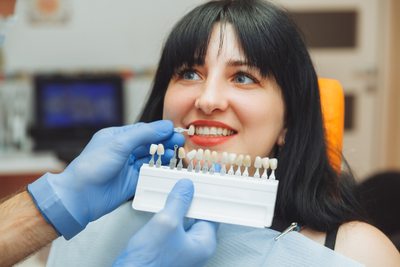
In cases where coffee stains are particularly severe or resistant to other whitening methods, I've learned that veneers or dental bonding might be a viable solution. Veneers are thin, custom-made shells that are bonded to the front surface of your teeth, effectively covering any stains or discoloration. Dental bonding involves applying a tooth-colored resin to the surface of your teeth and sculpting it into shape before hardening it with a special light. Both of these options can provide a dramatic improvement in the appearance of your smile and effectively address severe coffee stains.
However, it's crucial to consult with a dental professional before considering veneers or dental bonding, as these treatments are more invasive and may not be suitable for everyone. Your dentist can help you determine if these options are right for you and guide you through the process to achieve the best possible results.
Achieving a Brighter Smile Despite Coffee Stains

In summary, there are several ways to prevent, manage, and treat coffee stains on your teeth. By understanding the causes of coffee teeth stains and adapting your drinking habits, you can reduce their impact. Incorporating the right dental products and maintaining effective oral hygiene practices can further help you maintain a bright and healthy smile. For more severe staining issues, professional teeth whitening options, such as in-office procedures, custom take-home trays, or even veneers and dental bonding, can provide effective solutions. By staying diligent and working with your dental professional, you can continue to enjoy your daily coffee while keeping your smile looking its best.

